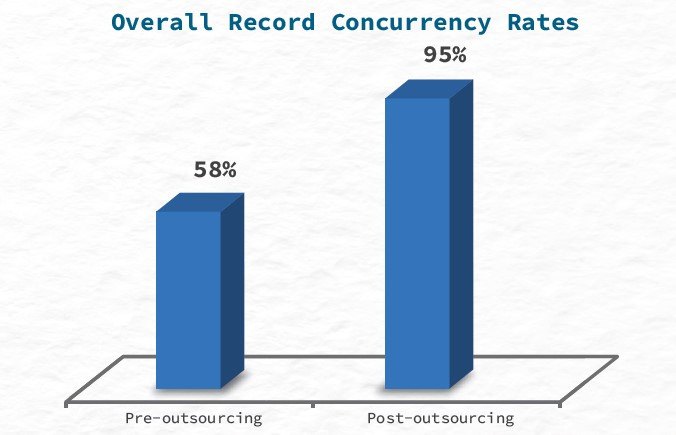Grady Memorial Hospital achieves a concurrent trauma registry
Introduction
Grady Memorial Hospital’s Marcus Trauma Center has been rated a Level I Trauma Center and verified by the American College of Surgeons (ACS) since 1987. It is now the fifth largest public hospital in the United States and one of the largest level I trauma centers in the country. The trauma registry serves as the foundation for a successful performance improvement program in the department. However, since the ACS defines a concurrent registry as having an 80% record closure rate within 60 days of discharge, the Grady registry needed to improve to meet that standard.
The main goal of Grady was to improve registry concurrency from 58% to 80% within six months. On the foundation of more timely clinical data, Grady could strive to not only meet the ACS standard, but also to enable better clinical outcomes with support from third party professionals.
Challenges
Registry Record Closure Rate Did Not Meet the ACS Standard
- 955 of the 1,653 records abstracted in-house were completed within 60 days of patient discharge, yielding a concurrency rate of 58% (Figure 1)
- Concurrency rate fell short of the 80% required by the ACS to define the registry as “concurrent”
Solutions
- More than 80% of the records were managed by a third-party vendor after the project was initiated.
- Mortality cases and any cases requiring real-time review were abstracted and entered by on-site registry staff.
- Twelve months of record closure data were divided into two six-month periods for comparative analysis.
- Six months of 2013 closure rates before the project began were used to establish a baseline. The 2014 closure rates for the same six-month period during the third-party vendor’s team’s collaboration were then used for comparison.
- A registry report was created to provide the total number of records entered, total number closed, and percentage closed within 60 days of discharge.

Fig. 1
Impact
- Utilizing third-party vendor: 1,522 of the 1,592 outsourced records were completed within 60 days of patient discharge, yielding a concurrency rate of 95% (Figure 1, above)
- Chi-square method was used for statistical analysis
- Record concurrency rate improved to 94% within the first month of record the project and ranged from 93-100% for the remainder of the analysis period (Figure 2)
- Exceeded the 80% required by the ACS to be considered a “concurrent registry”

Fig. 2
Conclusion
Partnering helped Grady meet and exceed the ACS standard for registry record concurrence within a shorter time frame than projected at the outset of the project. Utilizing comprehensive orientation in conjunction with a rigorous inter-rater reliability process, maintained data integrity throughout this transition while meeting higher metrics. In considering cost, technological interconnectivity and data integrity, the Q-Centrix team was able to collaborate with on-site staff to efficiently realize the goals of providing concurrent data to unlock the power of their trauma data at Grady.
A hybrid model consisting of in-house abstraction in tandem with third party vendor collaboration offers an interim solution to staffing shortages, backlogs and variability in volume. Collaboration with an expert team will help identify opportunities for registry improvement within a center’s clinical data program. Concurrent clinical data management improves a center’s ability to make data-driven decisions that positively impact patient care.